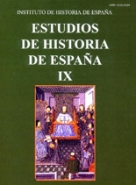La Campaña de Muza en el Noroeste en el año 713 y la capitulación de Astorga
Keywords:
Muslim Invasion, Astorga, Tariq, Musa, Muslim Sources, Christian SourcesAbstract
With the exception of two somewhat dubious Christian sources (Rodrigo Ximénez de Rada and the General Chronicle of Alfonso X the Learned), all the Muslim sources (Ibn Al-Qutiyya, Fath Al-Andalus, Ibn Al-Athir, Al-Nuwayri, Al-Maqqari and Al-Ghassani) indicate that Tariq could have reached Astorga, but he certainly did not take the city. However, C. Sánchez-Albornoz states that Tariq did take the city of Astorga in the year 712. This author also believes that Asturias must have surrendered subsequently, following Musa’s military campaign in the Northwest. The sources do not provide conclusive evidence that Astorga was taken by Tariq, and it seems highly unlikely that Astorga could have been seized without the entire surrounding Visigothic Duchy Asturiensis also having fallen. The Duchy and its capital city, Astorga, must have surrendered during Musa’s campaign, which undoubtedly took place in the year 713, a date that coincides chronologically with the assertions of certain brief chronicles (Chronicon ex Historiae Compostellanae Codice, an interpretation of the Alcobaça Codex written by Vaseo, Chronicon Alcobacense, Chronicon Lusitanum and Chronicon Conimbricense), as well as a text that appears at the end of the Prophetic Chronicle, all of which indicate that the Muslims controlled Asturias for fi ve years, from Musa’s military campaign in the Northwest (713) to the uprising led by Pelagius (718).
Downloads
Downloads
Published
How to Cite
Issue
Section
License






























 Estudios de Historia de España
Estudios de Historia de España